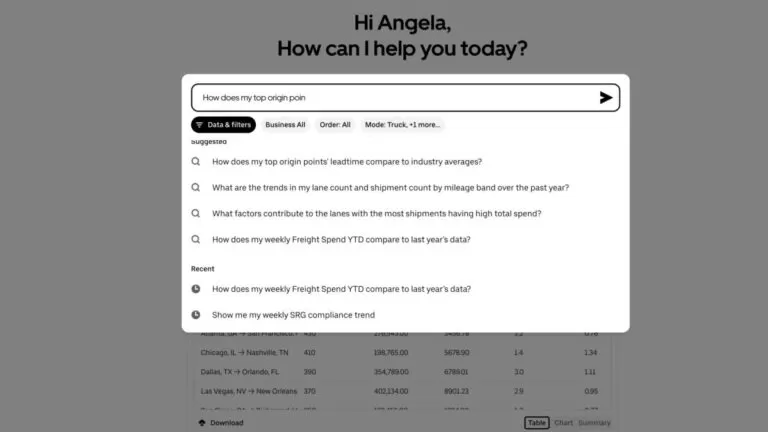Revolutionizing the Trucking Industry: How Uber Freight is Using AI to Take the Load Off Drivers
The trucking industry has been a vital part of the global economy for decades, transporting goods across countries and continents. However, it’s no secret that this industry has faced many challenges, from driver shortages to rising fuel costs. But now, with the help of technology and artificial intelligence (AI), a new player has entered the game and is revolutionizing the trucking industry.
Uber Freight, the logistics arm of the popular ride-sharing company, has been making waves since its launch in 2017. With its app-based platform, Uber Freight connects trucking companies with shippers, providing a more efficient and transparent way to move goods. But that’s not all – Uber Freight is taking things to the next level by leveraging AI tools to grow its business and improve the overall trucking experience.
So, what exactly is Uber Freight doing to disrupt the traditional trucking industry? And how is AI helping them achieve their goals? Let’s take a closer look.
Streamlining the Booking Process
One of the biggest pain points for trucking companies and shippers alike is the booking process. Traditionally, this involved multiple phone calls and emails to negotiate rates and availability, which could take hours or even days. But with Uber Freight’s AI-powered platform, this process has been significantly streamlined.
The app uses machine learning algorithms to match available trucks with the right load, taking into account factors like location, capacity, and delivery times. This not only saves time but also ensures that trucks are always on the move, maximizing their efficiency and reducing idle time.
Reducing Empty Miles
Another significant challenge in the trucking industry is empty miles, which refers to the distance a truck travels without carrying any load. According to industry estimates, empty miles account for about 20% of all miles traveled by trucks, resulting in lost time, fuel, and revenue for trucking companies.
To tackle this problem, Uber Freight’s AI platform uses data analytics to identify potential backhaul opportunities. Backhauling is the practice of picking up a load on the return trip after delivering a shipment, thereby reducing empty miles. By leveraging AI, Uber Freight is able to identify and match backhaul opportunities efficiently, benefitting both trucking companies and shippers.
Improving Safety and Efficiency
Safety is a top priority in the trucking industry, but with long hours on the road and tight delivery schedules, accidents can happen. To address this, Uber Freight is using AI to monitor driver behavior and identify potential safety risks.
Their app tracks factors like speeding, harsh braking, and lane changes, and provides real-time feedback to drivers. This not only helps improve safety but also promotes more fuel-efficient driving, reducing costs for trucking companies and their clients.
In addition, Uber Freight’s AI platform also optimizes routes and delivery schedules, taking into account factors like traffic, weather, and road conditions. This helps drivers avoid delays and reach their destinations safely and on time.
Empowering Drivers
Another significant aspect of Uber Freight’s AI tools is to empower drivers and improve their overall experience. With the app, drivers have more control over their work schedules and can choose the loads they want to haul. This not only gives them more flexibility but also helps them earn more by maximizing their time on the road.
In addition, the app provides drivers with real-time information and updates, such as load details, route optimizations, and payment status. This helps them stay informed and reduces the need for constant communication with dispatchers, allowing them to focus on the road and deliver their loads efficiently.
Growing the Business
By leveraging AI, Uber Freight has been able to grow its business rapidly. Since its launch, the platform has expanded to cover all 48 continental US states and has partnered with over 50,000 carriers. In 2020 alone, Uber Freight reported a 55% year-over-year growth in the number of loads booked on its platform.
Moreover, Uber Freight’s AI-powered platform has also helped them enter new markets, such as Europe, Canada, and Mexico, expanding their reach and creating more opportunities for trucking companies and drivers.
The Future of Trucking
With the success of Uber Freight’s AI tools, it’s clear that the trucking industry is on the brink of a major transformation. The traditional way of doing things is being challenged, and companies that fail to adapt and embrace technology may struggle to keep up.
But Uber Freight is not the only player in the game. Other companies, such as Convoy and Transfix, are also using AI to disrupt the trucking industry and provide more efficient and transparent solutions. This healthy competition is driving innovation and pushing the industry towards a more tech-driven future.
Final Thoughts
The trucking industry has come a long way, but there’s still a lot of room for improvement. With the help of AI, Uber Freight is transforming the industry, making it more efficient, safer, and driver-friendly. And as technology continues to advance, we can only expect more disruptions and innovations in the trucking industry, benefiting not only businesses but also consumers and the economy as a whole.
Referência:
Clique aqui



0 Comments